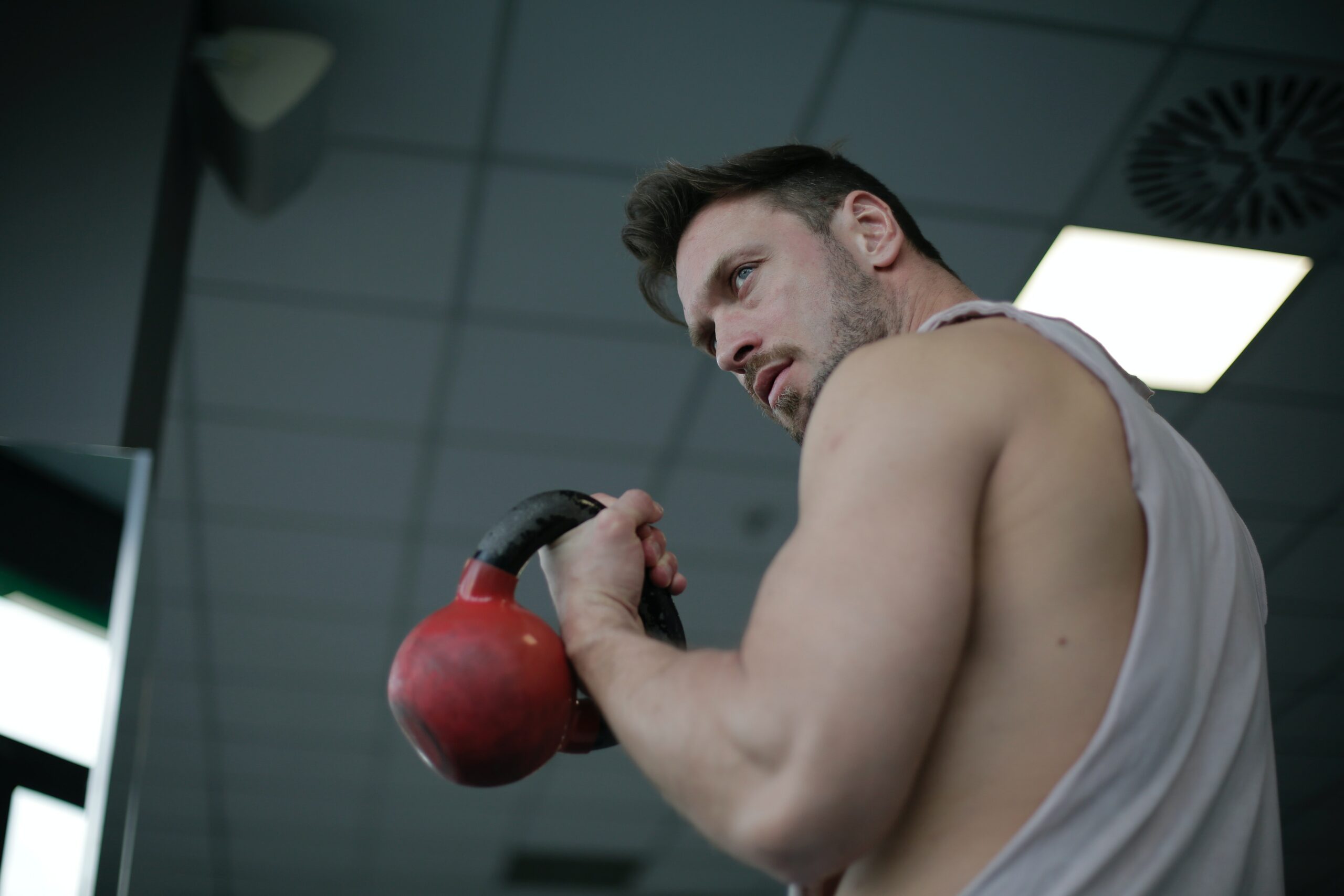The kettlebell has been increasingly popular in recent years as a means of strength training and the foundation of a complete fitness regimen. The one-armed kettlebell deadlift is a staple of kettlebell workouts. This workout challenges your balance and coordination while working multiple muscle groups. No matter where you are on your fitness journey, including one-arm kettlebell deadlifts in your regimen can definitely help you progress more quickly and effectively toward your goals. In this article, we’ll discuss the advantages of the one arm kettlebell deadlift, as well as some typical mistakes to avoid and vital tips and tactics for executing the exercise safely and effectively.
The Benefits Of One Arm Kettlebell Deadlifts
The gluteus maximus, hamstrings, and quadriceps are all worked hard during the one-armed kettlebell deadlift. However, it is an unusually powerful full-body workout since it forces you to use your abdominal, back, and grip muscles. Some of the most notable gains from incorporating this move into your daily regimen are as follows:
Strength and Muscle Development
The one-armed kettlebell deadlift is a practical exercise that represents a realistic lifting scenario. It aids in developing total strength and muscle mass in the legs and posterior chain, which comprises the back muscles, glutes, and hamstrings.
Core Stability
Because you’re lifting a kettlebell with one arm, your core muscles work hard to stabilize your torso and prevent rotation. It improves your balance and strengthens the muscles around your belly.
Improved Grip Strength
Holding the kettlebell tests your grip strength, which is necessary for many daily activities and weightlifting workouts.
Enhanced Coordination and Balance
Balancing the kettlebell on one side involves coordination and balance, which aids in improving general body awareness.
Functional Fitness
The one-arm kettlebell deadlift teaches your body to lift and carry objects asymmetrically, which is essential in everyday chores and sports.
Tips And Tricks For Safe And Effective Workout
Keep the following ideas and strategies in mind to optimize the advantages of the one-arm kettlebell deadlift while minimizing the danger of injury:
Start with the Right Weight
Select a kettlebell weight that will push you without jeopardizing your form. Beginners should begin with lesser weights to focus on appropriate technique before moving to greater loads.
Maintain Proper Form
Throughout the action, keep your spine neutral. Avoid arching or rounding your back excessively. Activate your core muscles to aid in the maintenance of your spine’s stability and the prevention of any twisting or rotating movements.
Initiate the Movement with Your Hips
Remember that your hips and hamstrings power the lift, not your arm. Avoid pulling the kettlebell off the ground with your arm.
Engage Your Core
Maintain core muscular engagement throughout the movement. It not only protects your spine but also improves general stability.
Balance the Load
Keep your shoulders level as you raise the kettlebell. Leaning to one side might strain your back and throw you off balance.
Control the Descent
With control, return the kettlebell to the ground. Avoid just dropping it because this can put undue strain on your muscles and joints.
Breathe Properly
Inhale while lowering, and exhale during the lifting of the kettlebell. Correct breathing helps to stabilize your core and provides superior overall control throughout exercise.
Warm-Up and Cool Down
Warm up properly before starting the activity to promote blood flow to your muscles. After that, stretch gently to preserve flexibility and improve recovery.
Progress Gradually
As you get more familiar with the one-arm kettlebell deadlift, progressively increase the weight to keep your muscles challenged. However, the appropriate form should take precedence over the heavy lifting.
Seek Professional Guidance
If you’re new to kettlebell training or have questions about your form, consult a trained fitness trainer. They can give you individual instructions and ensure you’re doing the workout correctly.
Are There Any Common Mistakes To Avoid?
The following are some frequent errors to avoid when executing the one arm kettlebell deadlift:
Rounding or Arching the Back
Preserving a neutral spine is of utmost importance. During the lift, avoid rounding your back (hunching) or arching it excessively (hyperextending). It can place undue strain on your spine and increase your risk of injury.
Using Your Arm Instead of Hips and Legs
The force for the lift should come from your hips and legs, not your arm. Lifting the kettlebell should be done using something other than your biceps. Instead, concentrate on pushing through your heels and initiating the action with your hip and leg muscles.
Neglecting Core Engagement
Your core muscles are essential in keeping your spine stable during the lift. Failure to activate your core might result in poor form and injury. Maintain a tight heart throughout the ride.
Lifting Too Heavy Too Soon
It is critical to begin with a weight that allows you to retain perfect form. Lifting too big a weight might damage your technique and lead to injury. As your strength and tone improve, gradually increase your weight.
Not Controlling the Descent
The controlled return of the kettlebell to the ground is just as vital as the lift itself. Avoid falling or allowing the kettlebell to swing out of control. It can cause muscular and joint tension.
Improper Foot Position
Your feet should be hip-width apart, with your weight spread equally. Avoid walking with your feet too close together or too wide apart, as this can impair your stability and balance.
Lifting with Rounded Shoulders
Throughout the lift, keep your shoulders pulled back and down. Rounded shoulders can contribute to poor posture and upper-body discomfort.
Final Thoughts
Incorporating the one arm kettlebell deadlift into your exercise program will help you reach new fitness levels. This adaptable workout trains several muscle groups and improves core stability, grip strength, and coordination. You can confidently incorporate this exercise into your training program by following the step-by-step instructions and utilizing the above tips and strategies. Remember that consistency and appropriate technique are essential for getting the full benefits of this dynamic and efficient movement.
